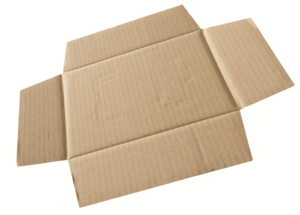DIY backyard games offer the perfect blend of creativity and fun, transforming your outdoor space into a hub of entertainment. Whether you’re gathering friends for a summer BBQ or seeking activities to keep the kids engaged, these games provide endless possibilities for enjoyment and laughter.
From crafting your own cornhole set to creating giant versions of classic card games, the world of DIY backyard games is rich with ideas that cater to all ages. By using simple materials and clear instructions, you can easily build engaging games that everyone will love, ensuring that your backyard becomes the ultimate play zone.
DIY Backyard Games Essentials

Creating your own backyard games can transform your outdoor space into a hub of fun and entertainment. Engaging friends and family in these activities not only fosters camaraderie but also encourages creativity and resourcefulness. Whether you’re gearing up for a barbecue, a birthday party, or just a sunny afternoon, having a selection of DIY games at your disposal can elevate the experience.
To embark on your DIY backyard gaming journey, you’ll need some essential materials and a few handy tools. Depending on the game you choose to create, the requirements may vary, but there are common items that can be utilized across various projects. Below is a detailed list of materials along with a step-by-step guide for crafting popular games like cornhole or giant Jenga.
Materials Needed for Popular DIY Backyard Games
Before diving into creating your games, it’s useful to gather all necessary materials. Here’s a comprehensive list of items commonly needed for DIY backyard games:
- Wood Boards: For constructing game surfaces, such as cornhole boards and giant Jenga blocks.
- Paint or Stain: To customize the appearance of your games and protect the wood.
- Sandpaper: To smooth rough edges on wood for safety.
- Drill and Screws: For assembling parts securely.
- Tape Measure: To ensure accurate dimensions during construction.
- Safety Goggles: Essential for eye protection while using power tools.
- Glue: Useful for added stability in some game constructions.
- Canvas Bags or Balls: Depending on the game, you’ll need bags filled with beans or balls to play with.
- Outdoor Game Rules: Print or write out the rules for easy reference during gameplay.
Step-by-Step Guide for Building Cornhole
Cornhole is a classic game that’s easy to build and provides endless entertainment. Follow these steps to create your own cornhole boards:
1. Cut the Wood
Use plywood to cut two boards measuring 2 feet by 4 feet each. These will serve as the playing boards.
2. Drill the Hole
In each board, measure and drill a 6-inch diameter hole centered 9 inches from the top edge.
3. Sand the Edges
Smooth all edges of the boards with sandpaper to prevent splinters.
4. Leg Construction
Cut four legs from 2×4 lumber, each measuring 12 inches long. Attach them at a 45-degree angle on the back of each board, ensuring stability.
5. Paint and Customize
Apply paint or stain to the boards, allowing for creativity with designs or team logos.
6. Create the Bags
Sew or use fabric to create eight bags, each filled with about 1 cup of dried beans or corn. Use sturdy fabric, and make sure to secure the seams well.
7. Set Up for Play
Place the boards 27 feet apart and enjoy the game with friends and family.
Building Giant Jenga
Giant Jenga brings the classic block-stacking game to a new level. Here’s how to build your own set:
1. Cut the Wood
Use 2×4 lumber to cut 54 blocks, each measuring 10.5 inches long and 2.5 inches wide.
2. Sand the Blocks
Smooth all the edges and corners of the blocks using sandpaper for a safe playing experience.
3. Customize the Blocks
Paint or leave them natural, ensuring they are all consistent in appearance. You can also number them for an additional challenge.
4. Stacking
Begin stacking the blocks in layers of three, alternating the direction of each layer. This creates the foundation for gameplay.
5. Play
Players take turns removing a block from the tower and placing it on top. The game continues until the tower collapses.
Customizing DIY Games for Different Age Groups
Adapting your DIY games to suit various age groups and skill levels can enhance the inclusivity and enjoyment of the activities. Here are some tips for customization:
- Game Size: For younger players, reduce the size of the playing area or the height of the game setup to make it more manageable.
- Rules Simplification: Simplify the rules for younger children while offering more complex strategies for older participants.
- Team Play: Encourage teamwork by forming mixed-age teams, allowing children to partner with adults or older teens.
- Adjusting Difficulty: For more skilled players, add challenges such as distance, obstacles, or scoring variations to increase competition.
Each of these DIY games can be tailored to fit the needs of your group, ensuring everyone has a blast while enjoying the great outdoors.
Incorporating Traditional Games into DIY Projects
Transforming classic games into outdoor DIY projects offers endless fun for backyard gatherings. By adapting traditional games, you create an engaging atmosphere that encourages physical activity and social interaction. Whether it’s a giant version of your favorite board game or an arcade classic, these DIY adaptations are perfect for all ages and skill levels.
Adapting Classic Board Games for Outdoor Play
Classic board games can be easily adapted for outdoor spaces, providing a refreshing twist that enhances the gaming experience. For example, consider turning a game of chess into a life-sized version. To do this, simply use large wooden blocks or painted pavers for the pieces and set up a giant board using a tarp or painted squares on the grass.
This not only makes the game visually impressive but also allows players to move around, making it more dynamic.Lawn Twister is another favorite that can be modified from the original board game. Create a large Twister mat using a waterproof tarp. Use spray paint or colored fabric circles to define the spots. This version works perfectly for outdoor fun, especially during warm weather.
Creating Giant Versions of Card Games
Giant versions of card games provide a unique twist that enhances backyard gatherings. The larger size makes the games more visually appealing and exciting, captivating the attention of all players involved. For instance, you can create giant playing cards using cardboard and a simple black marker. These oversized cards are great for games like Go Fish or Poker, making them easy to see and handle.Consider also crafting a giant Jenga set using 2×4 lumber.
Each block can be sanded and painted for easy stacking, creating a visually striking game that encourages teamwork and strategy. The thrill of watching the tower sway as players pull blocks adds to the excitement of the gathering.
Recreating Popular Arcade Games in the Backyard
Several popular arcade games can be successfully recreated in a backyard setting, providing nostalgic fun for both adults and children. One example is a DIY version of the classic game, Cornhole. This game requires simple materials: plywood boards, bags filled with corn or beans, and a saw for cutting the boards to the right size. The objective is to toss bags onto a slanted board, aiming for the hole to score points.Another fun arcade game to recreate is Skeeball.
You can build a DIY Skeeball ramp using wood, creating holes at different heights for scoring. Use some plastic balls and you have an instant hit for gatherings. This game encourages friendly competition and can be customized with painted designs or themes to match your backyard decor.
A backyard full of traditional games not only brings people together but also creates lasting memories.
Engaging with Roleplaying and Themed Games

Creating themed roleplaying games in your backyard can transport players into exciting worlds, encouraging creativity and social interaction. These games can revolve around various narratives, from fantasy adventures to mystery-solving escapades. The key to setting up an engaging experience lies in thoughtful preparation and immersive elements that enhance the overall theme.
Creating Fun Themes for Backyard Roleplaying Games
Establishing a captivating theme adds depth to your backyard roleplaying games and can make the experience memorable for all participants. When deciding on a theme, consider the interests of your group and the resources available. Here are some ideas to inspire your themed roleplaying games:
- Fantasy Adventure: Transform your backyard into a mystical land with fairy lights, faux trees, and props like swords and shields. Incorporate costumes to help players embody their characters.
- Detective Mystery: Set the scene for a thrilling whodunit with clues hidden around the yard. Use props like magnifying glasses and notepads to engage players in the sleuthing process.
- Survival Challenge: Create a setting that requires players to work together to survive. Use items like ropes, tarps, and basic survival gear to enhance the theme.
- Superhero Showdown: Encourage players to design their own superhero personas. Set up obstacles and challenges that require teamwork and strategy to overcome.
Designing a Backyard Escape Room Experience Using DIY Elements
The concept of an escape room can easily be adapted to your backyard, providing an interactive and brain-teasing experience. The following components help in creating a successful DIY escape room:
- Choose a Theme: Select an overarching narrative, such as a haunted house, treasure hunt, or spy mission, to create a cohesive story.
- Plan Puzzles and Challenges: Design a series of puzzles that players must solve to progress through the game. Incorporate a mix of physical challenges and mental riddles that are relevant to the theme.
- Set Up the Space: Create designated areas for each stage of the escape room. Use existing garden features, furniture, and decorations to enhance the environment.
- Use Props: Incorporate DIY props like locked boxes, hidden clues, and themed decorations to create an immersive atmosphere that encourages exploration.
Organizing a Backyard Game Night Featuring a Mix of Tabletop, Video, and Outdoor Games
A backyard game night can be a delightful fusion of various gaming styles, appealing to a wide range of interests among friends and family. To create an engaging environment that caters to different preferences, follow these steps:
- Select a Date and Time: Choose a suitable date that allows for adequate preparation and invites your friends or family to join in the fun.
- Curate a Game Selection: Compile a mix of tabletop games (like card games or board games), video games (perhaps set up a projector for multiplayer games), and outdoor games (like cornhole or frisbee) to keep everyone entertained.
- Set Up Game Stations: Designate specific areas for each type of game to create a flow and allow players to move freely between activities.
- Provide Snacks and Drinks: Keep players energized with a variety of snacks and beverages. Setting up a concession stand-style area can add to the fun ambiance.
Final Conclusion
In conclusion, DIY backyard games not only enhance outdoor gatherings but also foster creativity and togetherness among friends and family. With various options to customize and adapt these games, they can suit any occasion and cater to all skill levels, making every gathering memorable and exciting.
Common Queries
What materials do I need for DIY backyard games?
Common materials include wood, paint, fabric, and basic crafting supplies like glue and scissors, depending on the game.
How long does it take to build a DIY backyard game?
Most DIY games can be built in a few hours, but some larger projects may take a couple of days.
Can I customize games for different age groups?
Absolutely! You can adjust the difficulty or size of the games to make them suitable for children or adults.
Are there any safety tips for DIY backyard games?
Always use child-safe materials, secure all pieces properly, and ensure the playing area is free from hazards.
What are some popular DIY backyard games?
Popular options include cornhole, giant Jenga, ring toss, and giant Connect Four.



